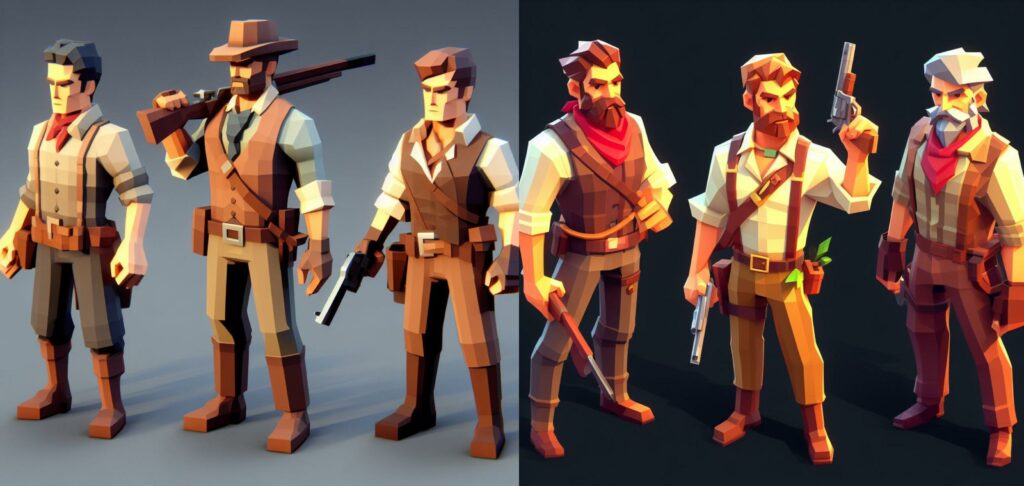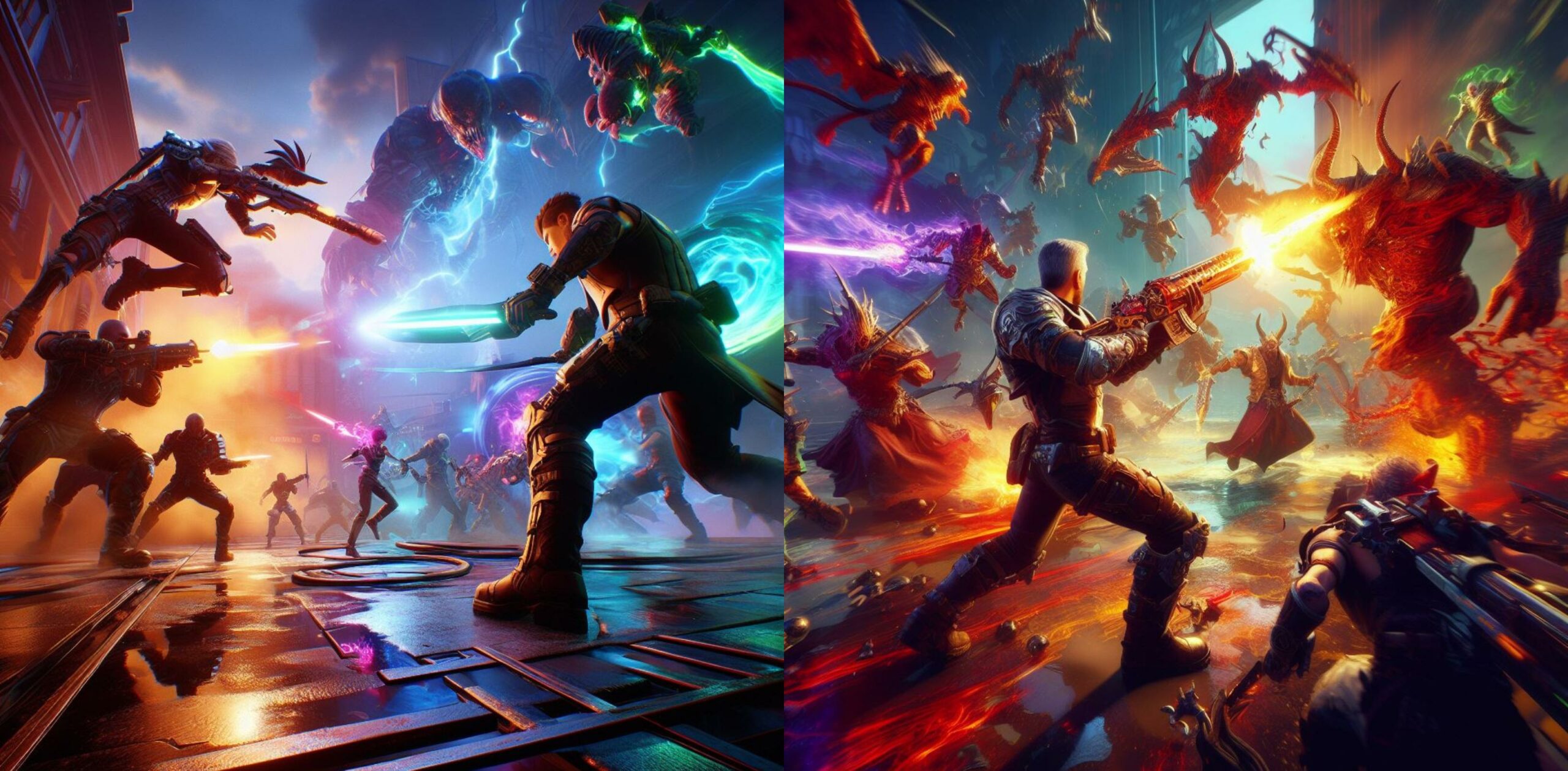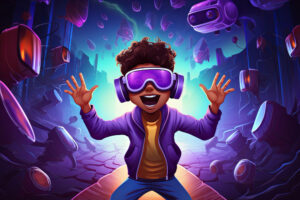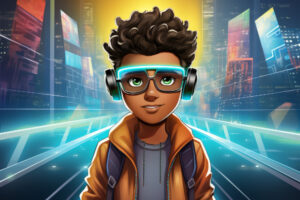Storytelling is a timeless art, deeply ingrained in the history of human culture. From the earliest days of oral traditions by campfires to the grand narratives depicted on the silver screen, the way we convey stories has continually evolved. In this digital age, the very essence of storytelling has transcended the confines of traditional mediums. The rise of 3D characters and the immersive technologies have ushered in a new era of creativity and engagement, redefining the very essence of narratives and offering exciting glimpses into the future of storytelling.
In this blog, we are exploring the powerful impact of 3D characters on the art of storytelling and look into the limitless possibilities they hold for the future.
The Evolution of Storytelling
From ancient oral traditions to the written word, theater, and cinema, the ways we tell stories have evolved over time. In the 21st century, we find ourselves at the cusp of another storytelling revolution. Technology and the rise of 3D characters is contributing to these advancements.
In today’s interconnected world, storytelling has transcended traditional mediums, thanks to the internet and social media platforms. This digital age has democratized storytelling, allowing individuals from diverse backgrounds to share their narratives with a global audience. With the advent of 3D characters and immersive technologies, storytelling is no longer confined to passive consumption but has become an interactive and participatory experience, ushering in a new era of creativity and engagement.
Understanding 3D Characters
First, let’s take a minute to understand 3D characters.
What are 3D Characters?
3D characters are essentially virtual personas that come to life within the digital realm. They are meticulously crafted using specialized software, where every aspect, from their appearance to their movements, is carefully designed. These characters possess a three-dimensional existence, which means they have volume and can interact dynamically with their surroundings, other characters, and the narrative environment.
The versatility of 3D characters is striking, as they can be adapted to suit various artistic styles and purposes. Low-poly characters, for instance, are minimalist in design and serve well in applications demanding efficiency, such as mobile games and virtual reality experiences. Stylized characters, on the other hand, embrace unique aesthetics, often featuring exaggerated features and proportions to infuse stories with a distinctive visual charm. Meanwhile, realistic 3D characters carry the nuances of real people, making them essential in achieving an authentic emotional connection in movies, TV shows, and even CGI-enhanced actors on the silver screen.
To sum up, these 3D characters are not mere digital entities but vessels through which emotions are conveyed, experiences are shared, and narratives are brought to life with unprecedented depth and realism. Their evolution represents a profound shift in how we engage with stories, and their potential continues to expand, shaping the future of storytelling in ways that were once unimaginable.

Types of 3D Characters
The popularity of 3D characters have soared in recent times, giving rise to its different types. Here are a few types:
1. Low-Poly 3D Characters:
Low-poly characters embody a unique charm in their simplicity. These 3D models are intentionally designed with fewer polygons, resulting in a more streamlined and geometric appearance. This minimalistic approach not only conserves computational resources but also allows for smoother rendering, making them particularly well-suited for mobile gaming where performance and efficiency are paramount.
In virtual reality (VR) and augmented reality (AR) applications, low-poly characters play a crucial role in ensuring a seamless and immersive user experience. Their lightweight design helps maintain high frame rates, preventing motion sickness and enhancing the overall sense of presence within these digital environments. As technology advances, we can expect low-poly characters to continue evolving and finding new applications, further enhancing the accessibility and appeal of interactive storytelling.
2. Stylized 3D Characters:
Stylized 3D characters represent a captivating fusion of artistry and technology. These characters are meticulously crafted with a deliberate artistic vision, often characterized by exaggerated features and proportions that deviate from the constraints of realism. This departure from realism allows them to convey a distinct and visually striking aesthetic, enriching narratives with a unique visual identity.
In the world of storytelling, stylized characters find their home in a range of media, including animated films, video games, and graphic novels. The creative freedom that stylized characters offer empowers storytellers to explore imaginative worlds, evoke specific emotions, and leave a lasting visual impression on their audiences. This artistic approach to character design not only enhances the overall storytelling experience but also underscores the boundless possibilities of 3D characters in shaping the narratives of tomorrow.
3. Realistic 3D Characters:
Realistic 3D characters represent the pinnacle of digital character design, striving to replicate the nuances of real-life individuals. These characters are meticulously crafted with an unwavering commitment to authenticity, capturing not only the visual likeness but also the subtleties of human behavior.
In the world of storytelling, realistic 3D characters have become indispensable in movies, television shows, and video games that aim to deliver an immersive and lifelike experience. Additionally, the use of CGI-enhanced actors in movies has become increasingly common, blurring the line between reality and digital artistry.
The pursuit of realism in 3D character design reflects a commitment to creating compelling narratives that resonate with audiences on a profound level. As technology continues to advance, the line between the real and the virtual will continue to blur, offering exciting possibilities for storytelling and character portrayal in the years to come.
3D Character Creation Tools
Creating 3D characters requires specialized software and skills. The process involves sculpting, texturing, rigging (adding a skeleton for movement), and animating the characters. It’s a multidisciplinary art that combines elements of sculpture, painting, and animation.
The democratization of 3D character creation has led to the development of online free 3D character creators. These web-based tools make it easier for aspiring artists and storytellers to dip their toes into the world of 3D character design without the need for expensive software. They offer a gateway for creativity, allowing anyone with an internet connection to start crafting their 3D characters.
In addition, for professionals and those seeking more advanced options, there are sophisticated 3D character creation software packages available. These tools provide greater control over the character’s appearance, movements, and interactions within the narrative.
Enhancing Storytelling with 3D Characters
The introduction of 3D characters has revolutionized storytelling. These characters can emote, express, and interact with their environments, deepening the connection between the audience and the narrative. Writers and directors can use 3D characters to convey complex emotions and experiences, making stories more engaging and relatable.
In the realm of virtual reality (VR) and augmented reality (AR), 3D characters are central to creating immersive experiences. They can guide users through interactive narratives, blurring the lines between fiction and reality. These technologies have the potential to transport audiences into entirely new worlds.
The incorporation of 3D characters into storytelling has ushered in a transformative era where narratives transcend traditional boundaries. With their ability to emote, express, and interact dynamically within their environments, 3D characters forge a deeper emotional connection between the audience and the story being told. They serve as conduits for conveying intricate emotions and experiences, enriching stories by allowing viewers to empathize with their digital counterparts.
Additionally, in the world of virtual reality (VR) and augmented reality (AR), 3D characters are not just characters; they are guides, companions, and the very essence of the immersive experience. Through their presence, users are led on immersive journeys that blur the lines between fiction and reality, enabling them to become active participants in the narrative. As the technology supporting VR and AR advances, the potential for 3D characters to transport audiences into entirely new and fantastical worlds becomes even more tantalizing.
As we continue to explore these innovative realms, the possibilities for storytelling are boundless, offering experiences that are not only captivating but profoundly transformative.
Technical Challenges in 3D Character Creation
The world of 3D character animation, while brimming with potential, presents its fair share of technical hurdles. One of the most intricate challenges lies in the realm of animating realistic facial expressions and body movements. Achieving lifelike movement and conveying subtle emotions through a digital avatar is a complex task that demands a deep understanding of both human anatomy and the intricacies of animation.
The good news is that the field is advancing rapidly, with innovative solutions emerging to tackle these challenges head-on. Artificial intelligence (AI) is playing an increasingly vital role in character animation, enabling characters to respond dynamically to their environments and interactions. Moreover, motion capture technology has evolved, allowing for more precise and nuanced tracking of real-world movements, which can be translated into the digital realm.
Additionally, these technological advancements are paving the way for more convincing and emotionally resonant 3D character animations. As AI and motion capture continue to progress, the boundary between the digital and the real is blurring, promising even greater strides in achieving lifelike and immersive storytelling experiences in the future.
The Future of 3D Character Technology
The horizon of 3D character technology holds immense promise, offering a tantalizing glimpse into what lies ahead. As we peer into the future, several trends and developments in the world of 3D characters:
Realism Beyond Imagination:
Firstly, advancements in artificial intelligence (AI) and machine learning will propel 3D characters into realms of realism that were once considered unattainable. These characters will not only look lifelike but will also possess a level of intelligence and adaptability that blurs the line between digital avatars and living beings.
Interactivity and Immersion:
Secondly, the future will see 3D characters becoming even more interactive and immersive. With the integration of AI-driven natural language processing and emotional recognition, these characters will engage in meaningful conversations. They will also respond dynamically to user input, creating deeply immersive experiences.
Virtual Reality’s Influence:
Thirdly, virtual reality (VR) will continue to play a pivotal role in shaping 3D character technology. The fusion of 3D characters with VR environments will transport users into entirely new worlds, offering unprecedented levels of presence and engagement.

Potential Applications of 3D Characters
The transformative potential of 3D characters extends far beyond the realm of entertainment. In fact, their versatility and adaptability make them invaluable in various industries:
Education:
Firstly, 3D characters have found a place in the education sector. 3D characters can also revolutionize education by serving as interactive tutors, guides, or historical figures within virtual classrooms. They can make complex subjects more engaging and accessible, catering to diverse learning styles and needs.
Healthcare:
Secondly, in the healthcare sector also, 3D characters can aid in patient education, helping individuals understand medical conditions, treatment options, and recovery processes. Additionally, they can be employed in therapeutic applications, assisting in mental health interventions and rehabilitation.
Customer Service:
Additionally, the use of 3D characters can enhance customer service interactions, offering personalized and empathetic assistance. These characters can guide users through troubleshooting processes, answering queries, and providing a more human-like service experience.
Simulation and Training:
Industries such as aviation, defense, and emergency response can also benefit from 3D characters in training simulations. These characters can mimic real-world scenarios, allowing trainees to practice and refine their skills in a safe and controlled environment.
Communication and Accessibility:
Additionally, 3D characters can break down language barriers and enhance accessibility for individuals with disabilities. They can serve as virtual sign language interpreters, facilitate multilingual communication, or provide visual aids for those with hearing or visual impairments.
As we look ahead, the integration of 3D characters into these diverse sectors holds the promise of improving communication, engagement, and understanding. Their ability to bridge the gap between technology and humanity offers a glimpse into a future where interactive and empathetic digital companions become integral to our daily lives. In addition to that, it is revolutionizing how we learn, heal, work, and connect across various domains.
Conclusion
To conclude, n this dynamic landscape of storytelling, 3D characters have emerged as the architects of new worlds and the conduits of human imagination. As we move forward, we must recognize that the evolution of 3D character technology represents not only a revolution in storytelling but also an ongoing exploration of the human experience. It is continually pushing the boundaries of creativity and engagement in ways that will shape our narratives for generations to come. Embracing the potential of 3D characters is an invitation to a future where stories transcend the limits of imagination, inviting us to embark on adventures yet uncharted and emotions yet unfelt.




